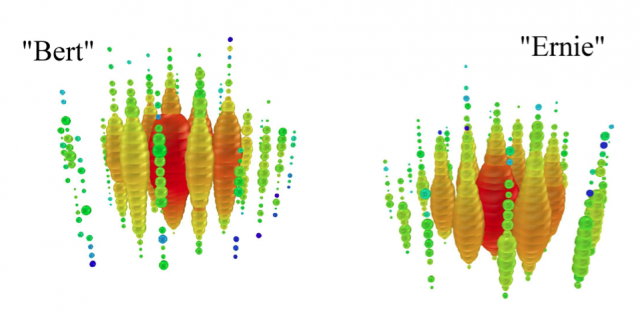
Some of the earliest and most successful neutrino detectors were based on enormous tanks of water. For example, Japan's Super Kamiokande held 3,000 tons of water, and researchers used the detector to watch for a sign that a neutrino had bumped up against one of the water molecules. A recently constructed detector takes a similar approach, observing about a cubic kilometer of water using over 5,000 optical sensors. It just relies on nature to provide the water. The detector is called IceCube, and its detectors are buried in the South Pole's ice cap.
IceCube has now scored its first big success, detecting the highest-energy neutrinos ever spotted. Odds are good that these neutrinos originated from an event distant from Earth, but remaining uncertainties mean that we can't conclude that with certainty.
The reason so much water is needed is that neutrinos don't like to interact with normal matter. Each second, a trillion neutrinos pass through your hand, but only about two will interact with an atom in your body throughout your entire lifetime. Spotting a neutrino requires a detector with a lot of material. Water has worked well, simply because it's relatively easy to get lots of it into one place and because it's transparent to much of the light that's created when high-energy neutrinos collide with an atom. Simply point enough photodetectors at a big tank of water and wait.
But rather than building a tank, the IceCube team decided to go where the water was already. They dropped strings of photodetectors to depths of over 2km in holes drilled in the ice and started watching for the tell-tale light. Since the bandwidth from the detectors to the rest of the world is pretty low, they even set up a server farm at the South Pole to filter the results for interesting events first.
These events are caused when high-energy neutrinos interact with an atom and create a spray of particles, some of which take away enough energy that they would move faster than the speed of light in the ice. To slow down, they emit detectable Cherenkov radiation.
Most of the higher energy neutrinos that IceCube has detected have come from collisions between cosmic rays and our atmosphere. However, there are limits to how energetic these neutrinos will get, and the IceCube team searched above those limits by adding up the energy in all of the photons that were detected as a single event. They came up with two very large events, both totaling just above a Peta-electron Volt. That's over 1,000 times the energy of the protons running through the LHC.
Naturally, they named them Bert and Ernie.
The only remaining uncertainty is where they came from. With only two events at this energy (IceCube normally detects a neutrino every six minutes), it's hard to push the statistical rigor up to the five sigma level that particle physics demands. But the background is expected to be very low, such that even two events are enough for nearly three sigma. The main uncertainty involves the neutrinos released by "charmed mesons," unstable particles that contain a charm quark.
If these results hold up with longer sampling times, they may be the first indication we have of what the researchers term "an astrophysical high-energy neutrino flux." In other words, neutrinos like these may be produced at a steady rate by extremely energetic events throughout the Universe. Given that neither matter nor magnetic fields tend to slow them down, most of them just keep going along at the same energy until those rare moments that they interact with something—such as the South Pole's ice cap.
The arXiv. Abstract number: 1304.5356 (About the arXiv).
reader comments
44